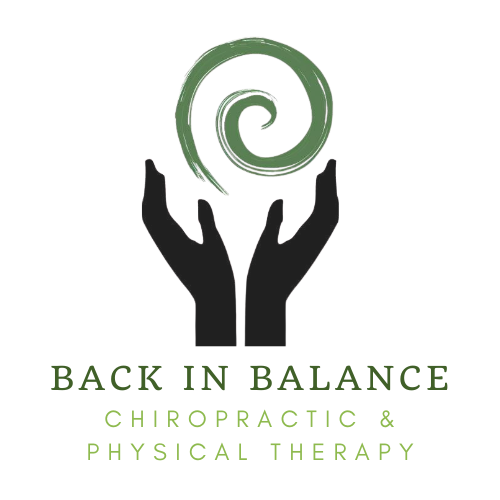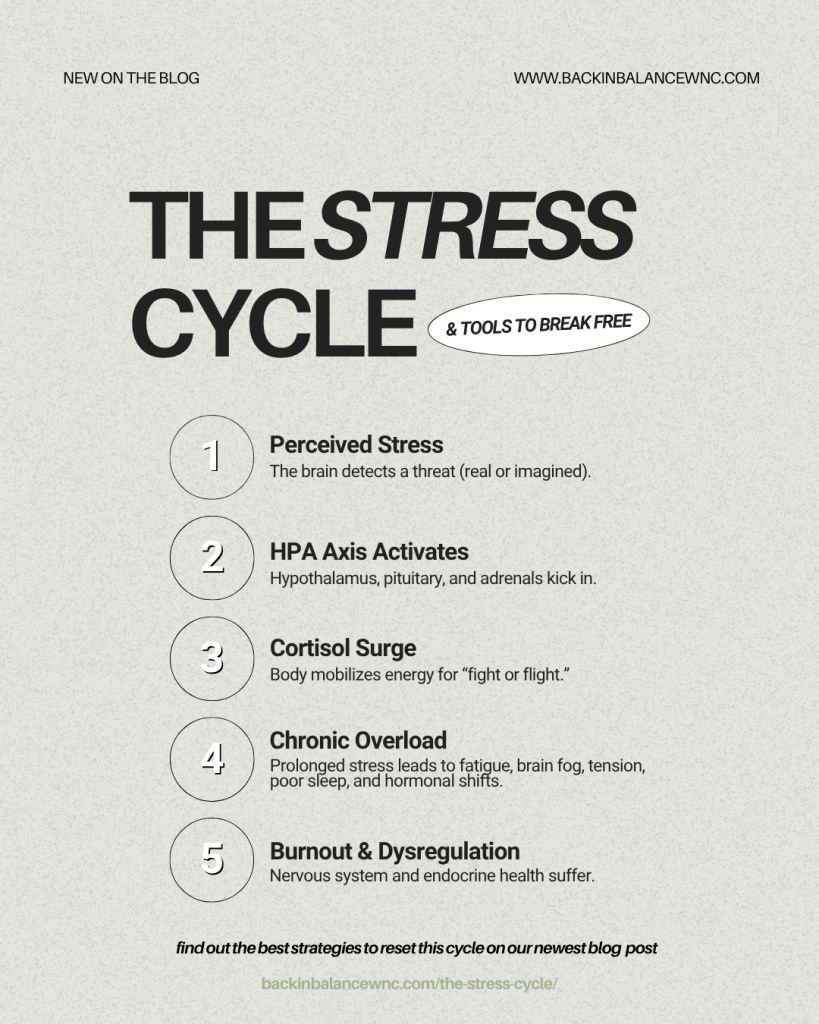The Stress Cycle: How Your Body Handles Pressure & 5 Ways to Reset
More Than Just a Busy Mind
We talk about stress like it’s something we can think our way out of. But stress isn’t just in your head, it’s a full-body experience. From brain fog and irritability to digestive issues and hormonal imbalances, chronic stress can show up in ways you might not expect. At the heart of your body’s stress response is something called the HPA Axis, which is the communication loop between your brain and adrenal glands.
When working well, the HPA Axis helps you adapt, stay focused, and maintain energy. But when it’s stuck in overdrive, it can lead to burnout, fatigue, and a host of health concerns. Understanding this cycle is key to breaking it—and supporting your body with real solutions.
What Is the HPA Axis?
HPA stands for Hypothalamic-Pituitary-Adrenal Axis. It’s your body’s command center for managing stress. Here’s how it works:
- The hypothalamus (in your brain) detects stress and sends a signal to the…
- Pituitary gland, which then alerts the…
- Adrenal glands, prompting them to release cortisol and other stress hormones.
In short-term situations, this system helps you respond to challenges. But when stress becomes chronic, your body stays stuck in a fight-or-flight mode, leading to imbalances in sleep, metabolism, immunity, and mood.
Signs Your HPA Axis Might Be Out of Sync:
- Feeling tired upon waking
- Mid-afternoon energy crashes
- Trouble falling or staying asleep
- Cravings for salt or sugar
- Anxiety, irritability, or mood swings
- Low libido
- Unexplained weight changes
If these sounds familiar, here are some tools to help!
5 Everyday Habits to Support Your HPA Axis:
- Start Your Day with Sunlight Exposure
Natural light in the morning helps reset your circadian rhythm and tells your body it’s time to be alert. Aim for 10-15 minutes outside within an hour of waking. - Keep Caffeine Before Noon
Caffeine too late in the day can disrupt your cortisol rhythm and make it harder to fall asleep. Try shifting your coffee routine earlier and hydrate well throughout the day. - Use Breathwork to Regulate Your Nervous System
Slow, intentional breathing activates the parasympathetic nervous system (your “rest and digest” mode). Try 4-7-8 breathing or box breathing to reset your stress response in just a few minutes. - Prioritize Balanced Meals
Protein, healthy fats, and fiber-rich carbs help stabilize blood sugar and support steady energy. Avoid skipping meals or relying on sugar-heavy snacks that lead to energy crashes. - Stick to Consistent Sleep and Wake Times
Your body craves rhythm. Going to bed and waking up at the same time each day helps reinforce healthy cortisol production and improves overall resilience.
How Functional Medicine Can Help
At Back in Balance, we offer a deeper dive into stress and hormone health with the DUTCH CAR test. This advanced saliva test shows how your cortisol levels rise and fall throughout the day, revealing how well your HPA Axis is functioning.
With that data, we will then create a personalized plan that may include:
- Nervous system support through chiropractic care
- Targeted nutritional supplements
- Lifestyle strategies tailored to your body’s rhythm
Ready to feel like yourself again?
Visit our Functional Medicine tab to start your personalized path to stress recovery.

